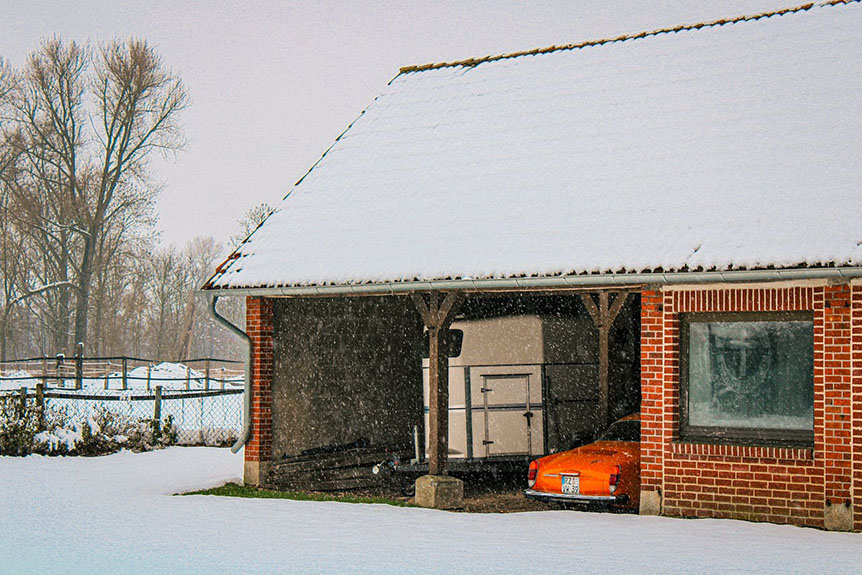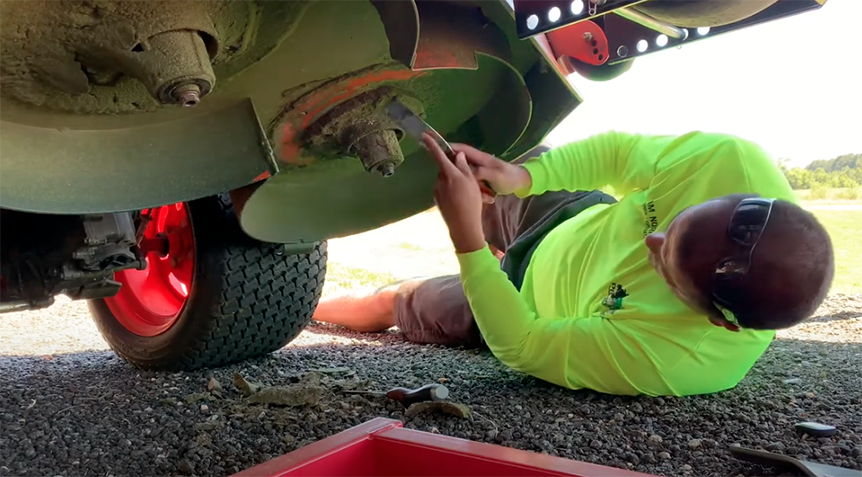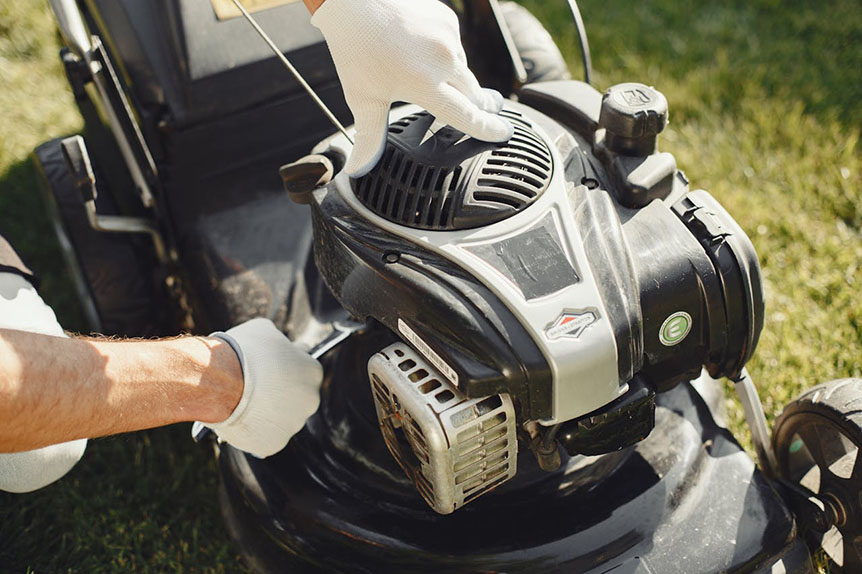 |
| Taking care of your lawn mower doesn’t end when the grass stops growing. Winter storage of lawn mowers plays a big part in keeping your machine running smoothly for years. Cold weather and long months of inactivity can wear down parts, from the engine to the blades. Following a few simple steps, you can avoid costly repairs and have your mower ready to go when spring comes around. Let’s explore how proper winter storage can save you time and money. |
| Clean the Lawn Mower Thoroughly |
| Before storing your mower for the winter and transitioning from lawn care to snow removal, it's important to clean it properly. Dirt, grass clippings, and other debris can cling to the underside, around the blades, and inside the deck. If left there, these materials can cause rust and clog vital components, affecting your mower’s performance. Use a brush or a hose to remove any buildup from the deck and blades. For tough spots, a mower deck scrapper can help scrape away stuck-on debris. A clean mower is less likely to develop problems during storage and will be ready to use when you need it again. |
 |
| Grass gets everywhere, so clean your lawn mower regularly. |
| Secure a Dry, Protected Area for Winter Storage of Lawn Mowers |
| Finding the right storage spot for your lawn mower is just as important as maintenance tasks. A dry, protected area helps prevent rust and damage during the cold months. In states like Colorado, where temperatures drop well below freezing, snowfall is frequent, and cold and moisture can seriously harm your mower. Freezing temperatures can thicken fuel and oil, while heavy snow can cause rust and corrosion if the mower isn't sheltered. Ideally, store your mower in a garage or shed, clearing the area of clutter that could cause damage. If indoor storage isn’t possible, use a waterproof cover to protect it from snow and ice. For added peace of mind, professional storage services like Columbine Moving and Storage provide secure options for keeping your mower safe and well-protected until spring. |
| Empty or Stabilize the Fuel Tank |
| As it sits, the fuel in your lawn mower can break down and gum up the carburetor or other parts of the engine, making it difficult to start when spring arrives. You have two simple options: you can either run the tank dry or add a fuel stabilizer. Running the mower until it uses up all the fuel ensures that no gas is left to go stale. Adding a stabilizer is a great alternative if you’d rather leave some fuel in the tank. The stabilizer helps prevent the fuel from breaking down. After pouring it in, let the engine run for a few minutes so the treated fuel can circulate through the system. |
| Change the Oil |
| Changing the oil in your lawn mower is another important step before storing it for winter. Old, dirty oil can cause significant engine damage over time. When you leave it in for months, it can thicken and create sludge, restricting proper lubrication. To change the oil, start by running the mower for a few minutes to warm it up, as warm oil drains more easily. Next, turn off the mower and locate the oil drain plug, typically found at the bottom of the engine. Remove the plug and let the oil flow into a container for disposal. After draining, replace the plug and refill the engine with fresh oil according to your mower's specifications. Using the correct type of oil helps keep your engine running smoothly and can prolong its lifespan. |
 |
| Not changing the oil before winter can lead to serious engine issues in the spring. |
| Remove and Clean the Spark Plug |
| The spark plug plays a key role in starting the engine, and if it’s dirty or worn, it can lead to starting issues come spring. To begin, disconnect the spark plug wire and use a socket wrench to remove the spark plug from the engine. Once it’s out, take a moment to inspect it for any signs of damage or heavy carbon buildup. If the spark plug looks dirty, you can clean it with a wire brush or replace it if it appears worn. A new spark plug is often a good investment if the old one shows significant wear. After cleaning or replacing it, make sure to reconnect the spark plug wire securely. |
| Sharpen the Mower Blade |
| Sharpening your lawn mower's blade is a smart move that pays off when you start mowing again. A sharp blade cuts grass cleanly, promoting healthier growth and preventing damage to your lawn. To sharpen the blade, first disconnect the spark plug wire to ensure safety. Next, remove the blade using a socket wrench. It’s essential to wear gloves to protect your hands while handling the sharp blade. Once removed, clean it with a wire brush to eliminate any grass buildup. You can sharpen the blade using a file or a blade sharpener, focusing on maintaining the original angle of the blade. If you prefer, you can also take it to a professional |
| Remove the Battery (If Applicable) |
| If your lawn mower has a battery, removing it for winter storage is a smart move. Cold temperatures can impact battery performance, leading to difficulty starting the mower in spring. Start by disconnecting the negative terminal first, then the positive terminal, to avoid any electrical short circuits. Once disconnected, carefully remove the battery from the mower. Store it in a cool, dry place away from extreme temperatures. It’s also a good idea to keep the battery charged throughout the winter by checking it periodically. If the battery shows signs of wear or doesn’t hold a charge well, consider replacing it before the next mowing season. |
| Final Safety Checks Before Storing |
| Before you finalize the winter storage of lawn mowers, conduct a few last safety checks to ensure your mower is fully prepared to help revive your lawn when spring arrives. Here’s a quick list of tasks to complete: |